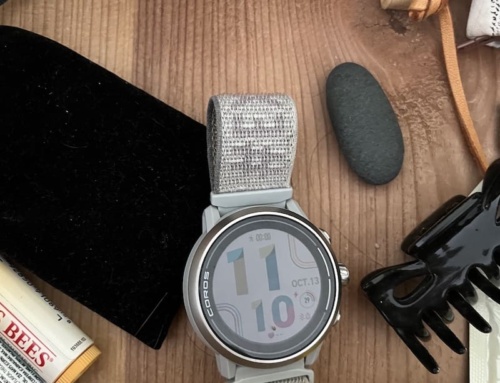
September means sharpened pencil tips, cooler temps, and the opportunity to reset your routine. In other words, this is prime time for going Back to Basics.
Whether you’re a brand new runner or a marathon maniac, you’ll find fresh, helpful tips and ideas. (We’re sharing ours in the post, and we encourage you to chime in with comments.)
We’re starting with the most basic—and challenging—Back to Basics: How to Get Started Running.
Running is one of the simplest sports you can start: all you need is yourself, some good shoes (more on that in an upcoming post!), a supportive sports bra, and 20 or 30 minutes a few days a week. (Read: No need to understand an offside rule or recruit 10 teammates.)
That said, running is most definitely the easiest sport to start; if you, like most of us, have less-than-fond memories of the one-mile-trial in middle school, you might recall that breathless, red-cheeked, shaky leg feeling of running hard. We’re here to help you update your maps—and give you some strategies so you don’t injure yourself or burn out as you start running.
#1: Don’t think; just go.
For the first few weeks as you start running, make your goal simply to get out the door. This isn’t about speed, technique, or miles covered, it’s about creating a new habit. As Gretchen Rubin said, “Habits are the architecture of everyday life.” We want you to be a lifelong runner, to love movement, and to look forward to hitting the miles—so making running a habit is essential.
What often happens is this: something—a spreadsheet to be filled in, a lunch to be packed, a floor to be swept, a kid to help with homework—feels much more important than a run. While we’re all about helping your kids with their homework, a run can be 20 minutes. You head out the door, get in some forward movement, and return feeling like you just hung the moon. You’ll be in a much better spot to help, sweep, spreadsheet, whatever your next task is.
Again, this is not about speed or distance. Whether you go half of a mile or two; walk most of it or none of it; just go! Getting started as a runner means practicing moving when you’d rather press snooze or hit “next episode” on Netflix. There will always be an excuse to skip a run, so make “don’t think; just go” your new mantra. Eventually, running will become part of your routine and your body will expect—and thank you for—it.
#2: Run slower than you think.
If you want an immediate side cramp and to kill any motivation for a future run, then sure: run as fast as you can.
For everyone else, starting a running journey is not an empty-your-lungs-and-legs experience. You want to be able to talk when you run. If you’re with someone, you should be able to carry on a conversation. Alone? Check your effort by practicing that Academy Award acceptance speech you usually reserve for the shower. Can you only croak out one or two words? Slow down.
If the talk-test still has you running too fast, try this: Run at a pace where, if a coach were standing in your driveway at the end of the run and told you to go run for another 5 or 10 minutes, you could. You might not like it, but you could get it done.
#3: Embrace walk breaks.
There is no shame in walking. Let us repeat that: Forward movement is the goal, and walking checks that box.
Taking walk breaks does not make you any less of a runner. In fact, walking allows you to control your fatigue, helps your legs and feet adapt without overuse issues, and allows you to reset your physical form. Plus, short breaks are ideal for keeping your motivation at a high level. Put parameters around your walk breaks— walk for one minute, to the top of the tough hill, to that mailbox, whatever—and then get your booty moving again.
One more thing about walk breaks as you start running: Take one before you hit your breaking point. Instead of slamming into the red zone (which hopefully you’re not doing: see #2) and then feeling defeated, slow your roll into a walk, mentally and physically reset, then go again.
#4: Join a running group.
Running groups aren’t just for experienced racers, they’re for people of all paces and abilities.
Search She Runs This Town to see if there’s a chapter near you. If you don’t have a club in your area, call a local running specialty store and see if they have a beginner class or other options for new runners. Reach out and tell them you’re a brand new runner and you’d love to find some newbies to run with, too. We promise, you’ll be glad you did; the miles pass much more quickly—and are way more entertaining—with a buddy.
#5: Trust that one day, it’ll feel easier.
Be patient with yourself. Habits take time and progress comes in increments.
For some, running will be easier in six weeks; for others, it could be six months. One day, your breathing will regulate itself into a nice little rhythm, and you’ll look down at your watch and think, “Wow, I’ve already been running for 30 minutes! I feel so good!”
Trust us: that day will come, and it’s worth every mile you put in.






Brilliant advice thank you. I am starting my w9r1 tomorrow and this is just what I needed to help het me through
I love starting off with “don’t think, just go”– it is definitely the place to begin. Otherwise, our commitment to run just never happens! My caveat is always that “something is better than nothing.” And I’ve never regretted making the investment of time to my health that a run– no matter how long– always is.